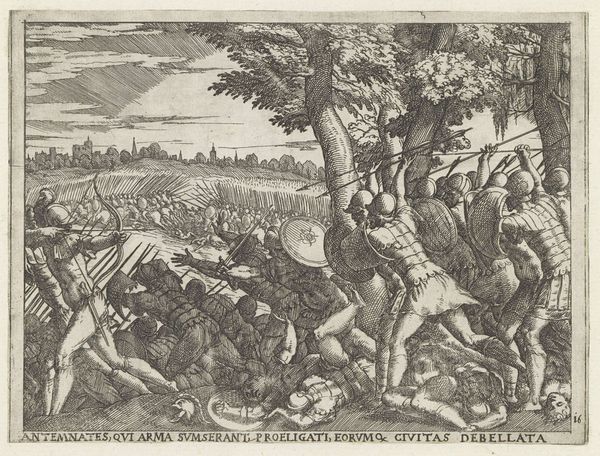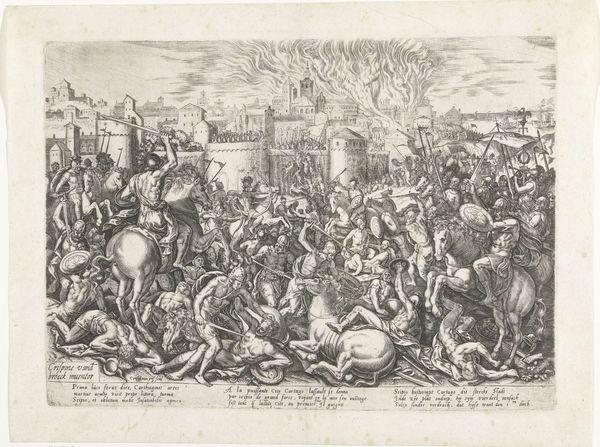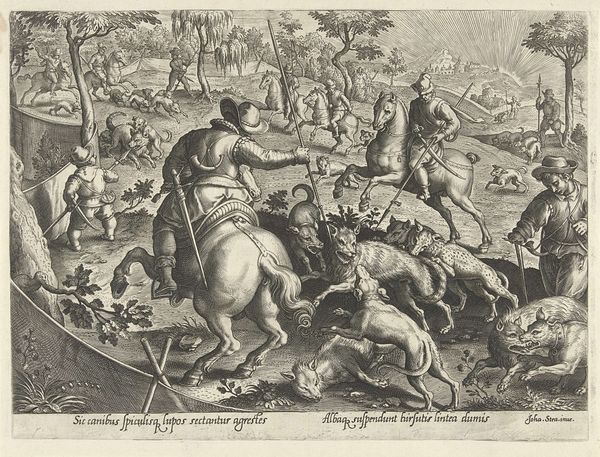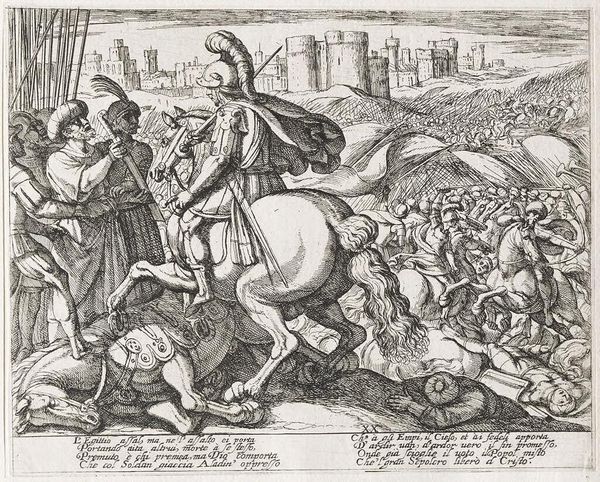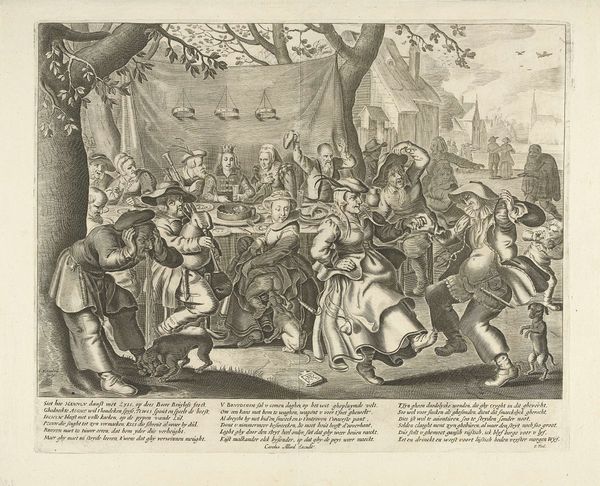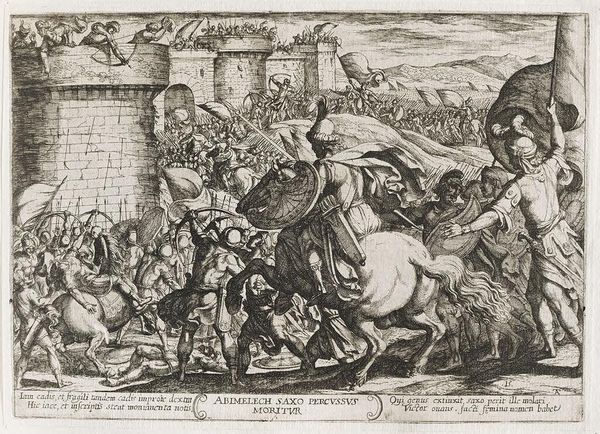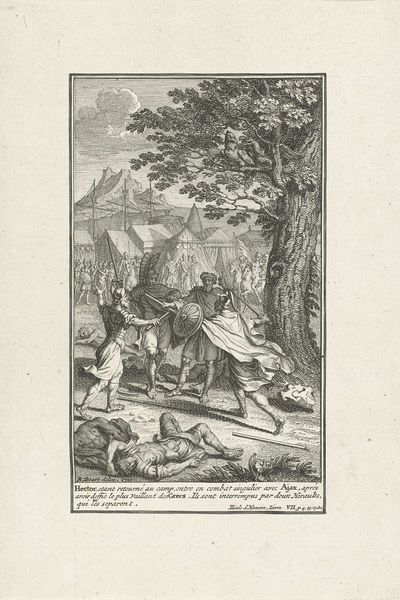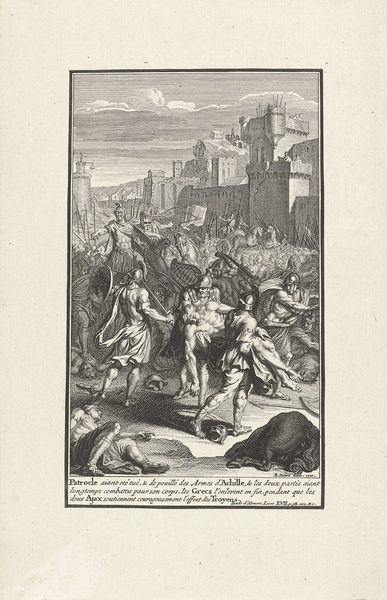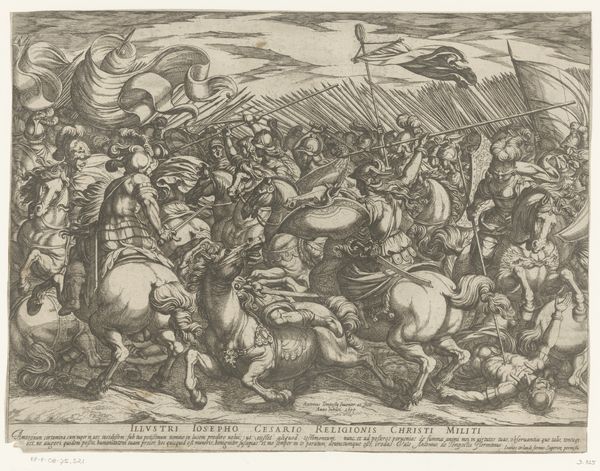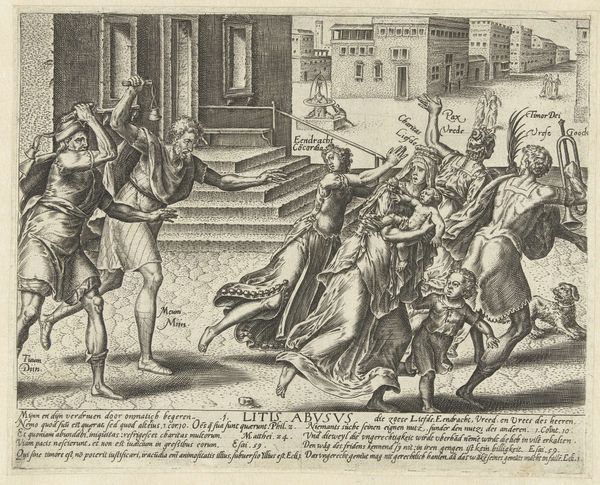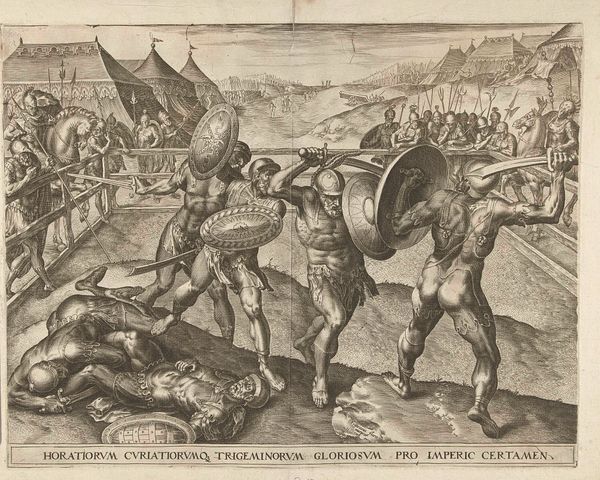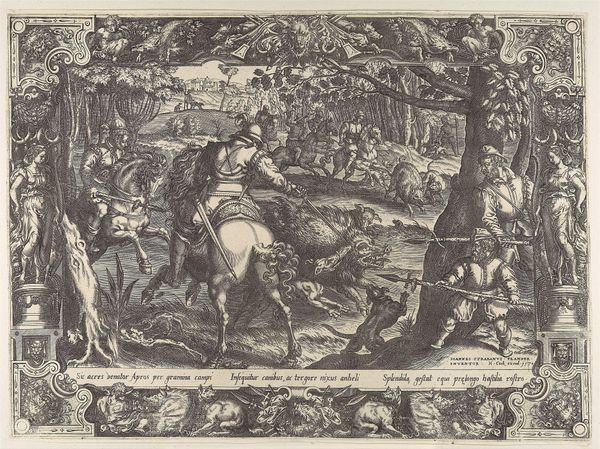
print, engraving
#
portrait
#
narrative-art
# print
#
mannerism
#
figuration
#
ancient-mediterranean
#
line
#
history-painting
#
engraving
Dimensions: height 137 mm, width 181 mm
Copyright: Rijks Museum: Open Domain
This print, "Romulus onderwerpt Fidenae," was made by Giovanni Battista Fontana in the late 16th century using an engraving technique. Here, a metal plate was carefully incised with lines to hold ink, which then transfers to the paper, creating an image of warfare and conquest. The process of engraving demands precision, and tremendous physical effort, reflecting the labor of artistic production. Look closely at the density of lines, which creates depth and shadow. Notice how Fontana uses the medium of printmaking to tell a story of military power and territorial expansion, reflecting the political climate of his time. The technique is perfect for distributing political messaging. By considering the process of its making, and the labour it entailed, we can appreciate how this print is not just an image, but also a product of skilled craft and social context. It challenges us to think about the relationship between artistic skill, technological advancement, and the narratives of power that circulate through society.
Comments
No comments
Be the first to comment and join the conversation on the ultimate creative platform.

